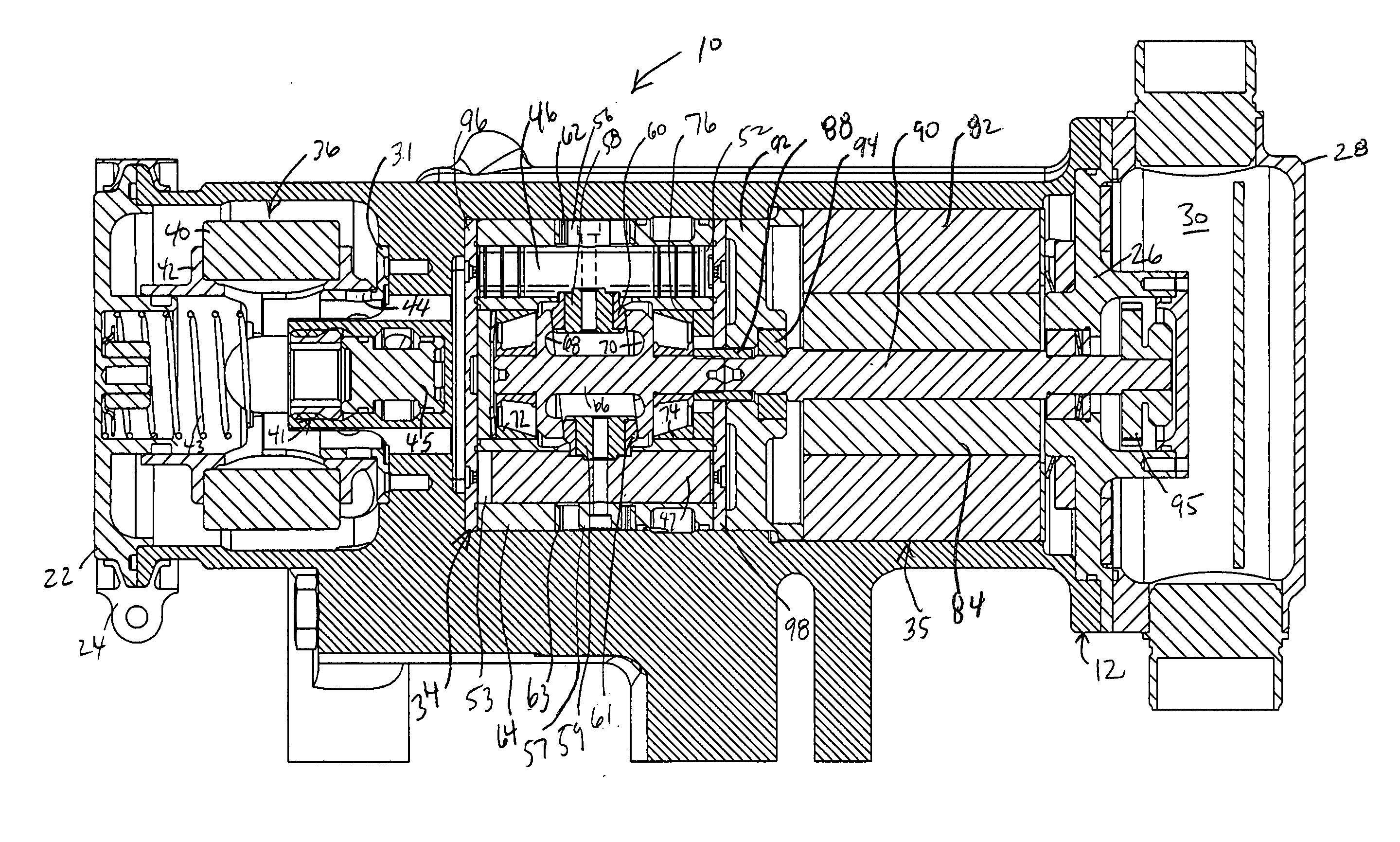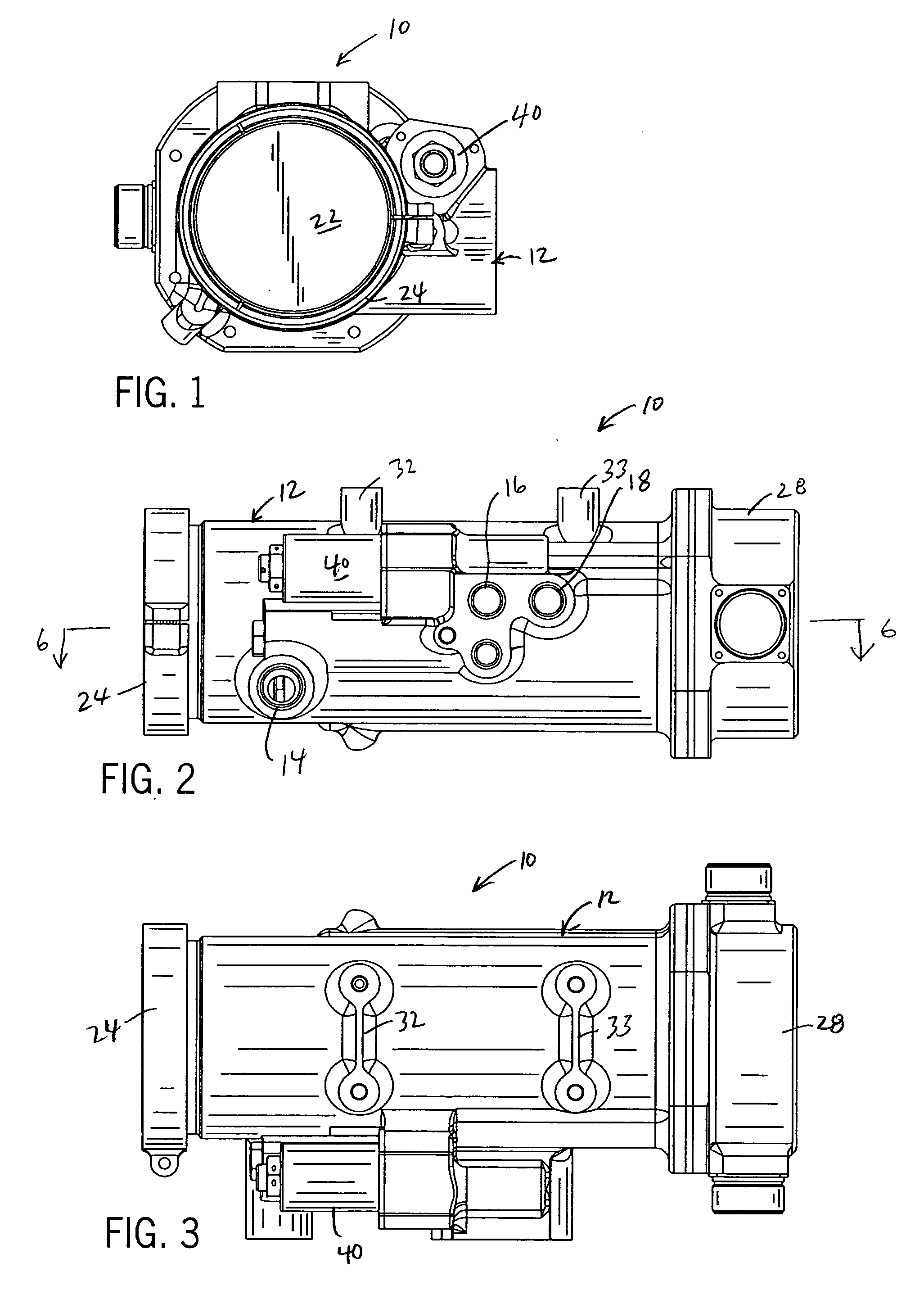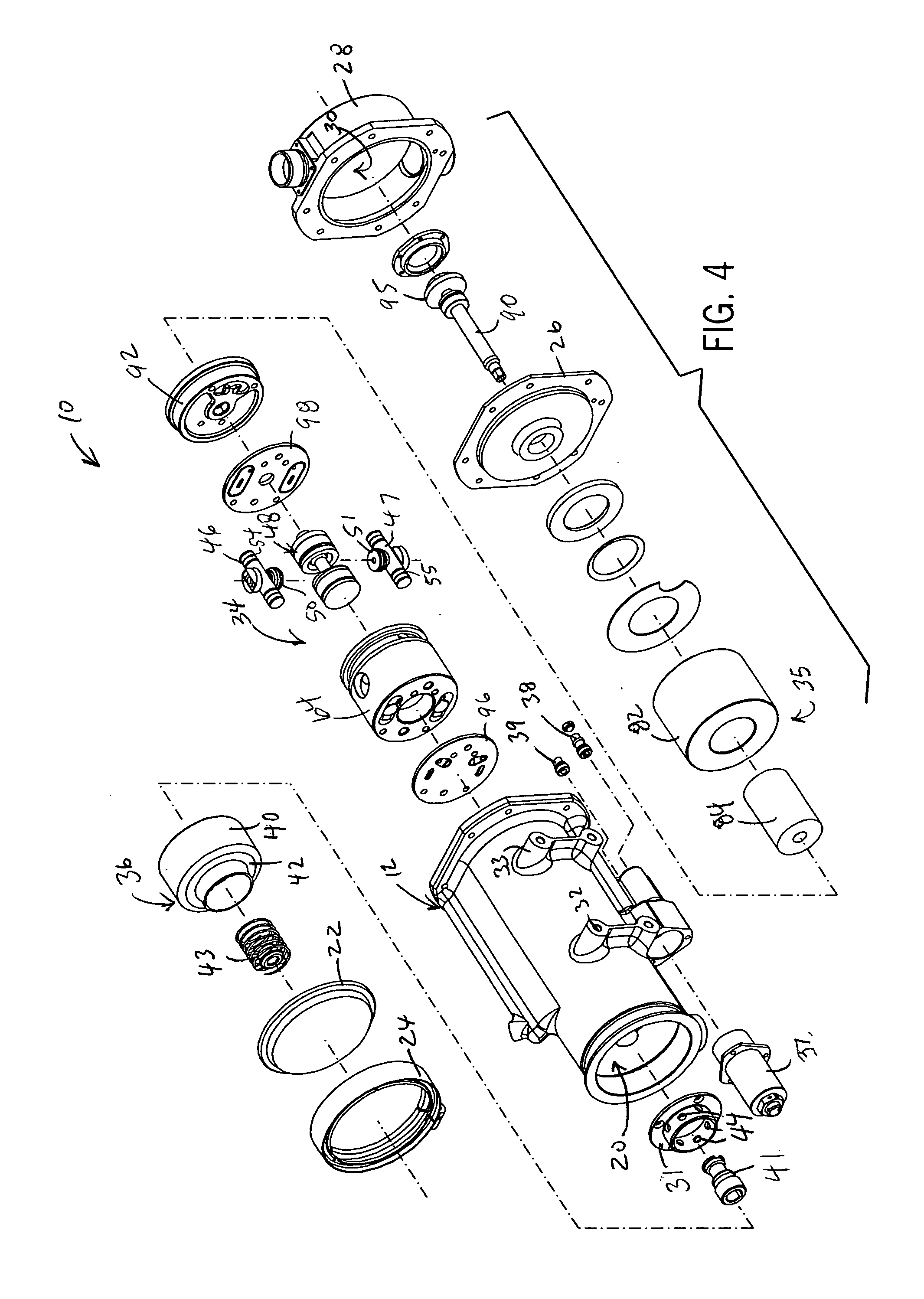Fuel control module
a technology of fuel control module and control module, which is applied in the direction of liquid fuel engine, positive displacement liquid engine, piston pump, etc., can solve the problems of high cost and space occupation of multiple components, leakage internal, and high power consumption of gear pump, and achieve high pressure and flow rate, high accuracy and efficiency
- Summary
- Abstract
- Description
- Claims
- Application Information
AI Technical Summary
Benefits of technology
Problems solved by technology
Method used
Image
Examples
Embodiment Construction
[0029] The present invention provides a fuel control module (“FCM”), generally referenced in the drawings by number 10, that fits in line between a fuel supply 11 and a fuel consuming device 13, for example which can be a gas turbine engine for power generation or propulsion applications, such as a jet engine or auxiliary power unit therefor consuming standard jet fuel (Jet A, Jet B, JP4 or JP5). In typical applications, the FCM 10 is electrically coupled via a 2-way bus to a remote master computer that controls high level fuel management and other system operations.
[0030] The FCM 10 is designed to provide a single device incorporating all of the components for controlling fuel delivery to the engine downstream from the master computer and fuel supply. Installation, as well as serviceability and replacement, of these components is thus simplified. The modular nature of the FCM 10 also allows it to be swapped easily for another unit having different operating parameters should fuel ...
PUM
 Login to View More
Login to View More Abstract
Description
Claims
Application Information
 Login to View More
Login to View More - R&D
- Intellectual Property
- Life Sciences
- Materials
- Tech Scout
- Unparalleled Data Quality
- Higher Quality Content
- 60% Fewer Hallucinations
Browse by: Latest US Patents, China's latest patents, Technical Efficacy Thesaurus, Application Domain, Technology Topic, Popular Technical Reports.
© 2025 PatSnap. All rights reserved.Legal|Privacy policy|Modern Slavery Act Transparency Statement|Sitemap|About US| Contact US: help@patsnap.com



